The Storied History of the Morgan Dollar
Posted on — Leave a commentIn 1873 the nation took steps to battle an unexpected problem with the money supply in the United States. Officials initiated the Fourth Coinage Act.
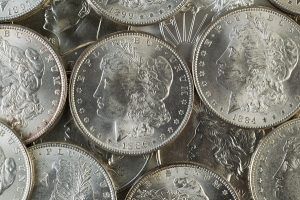
Prior to the Fourth Coinage Act, citizens were permitted to bring their silver to the mint and have the metal pressed into coins for use as legal tender. This service, which carried a fee, created problems when the intrinsic value of silver fell below the face value of the coin minted. The difference in these two values presented opportunities for fast, easy wealth to silver holders. This practice created inflation problems, which led officials to revise the laws pertaining to the US Mint.
Changing these laws had an enormous impact on the US economy because it ended the monetary standard known as bimetallism. Under bimetallism the value of currency is defined in terms of its equivalent value in one of two metals. Commonly, these two metals are gold and silver. Some were happy to see bimetallism disappear, citing problems with the system, like Gresham’s Law. This principle, in its simplest form, states that “bad money drives out good.” That is, in time, the more valuable of the two metals will eventually disappear from circulation because people will horde the more valuable commodity.
However, in the same year of Fourth Coinage Act the United States and Europe suffered from a period of economic depression known as the Panic of 1873. There were numerous causes. Inflation, speculative investments, and massive property losses from the Chicago and Boston fires all contributed. Soon, the nation took steps to resume the free coinage of silver with the Bland-Allison Act. As a result, the Treasury would purchase two to four million dollars worth of silver on a monthly basis for the purpose of minting what became the Morgan Dollar. The decision was the result of a contentious period in US history, but the controversy was just beginning.
The original design featured an eagle on one side with eight tail feathers. This detail was a departure from all previous U.S. coins in which the eagle had an uneven number of tail feathers. Eventually, officials decided to change the design back the customary seven feathers. The Philadelphia Mint was the only facility issuing the Morgan Dollar at the time, therefore, they re-cast the dies. As a result, a few rare Morgan Dollars have seven tail feathers superimposed over the original eight.
Once the design was corrected, the Mint began issuing the Morgan Dollar in vast quantities. Much of the pressure to mint so many came from silver miners who wanted a stable and predictable demand for their metal. With so many on hand, millions of coins were stored in U.S. vaults. Eventually, the government found a use for the coins when World War I demanded more resources for the war effort. The Mint melted every Morgan Dollar they had – or so they thought.
In the early 1960s officials conducted an audit of the Treasury’s holdings. To everyone’s surprise, there was a forgotten stockpile of Morgan Dollars sealed, and abandoned in the main building of the Treasury in Washington, D.C. The government decided to sell them to the public.
The demand was insatiable. More than 400,00 orders came through with approximately half turned away due to limited availability.
Today, the coin remains popular with collectors because it represents such a diversity of story lines, from bimetallism, to tail feathers, to a forgotten cache.
A Small Coin with Huge Historical Significance
Posted on — Leave a commentThe United States of America was still in its infancy in the early 1790’s. The Founding Fathers signed the Constitution just a few years before in 1787 and many landmark events that shaped the country we are today occurred in the years that followed.
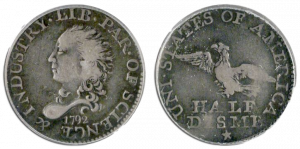
Up until this time, American colonists were forced to use European coins for everyday purchases. The Spanish dollar was a popular method of transactions at that time.
The nation faced a shortage of small change and it was clear that America needed its own system of currency. America needed its own coinage, especially small change, and they needed it fast.
The first Secretary of the Treasury – Alexander Hamilton – began outlining a system for America’s coins in 1790.
First coin struck by U.S. government
Out of that plan, the Half Disme, or half a dime, was the first coin ever struck by the authority of Congress under the April 1792 Mint Act.
The story of how the Half Disme got its name traces back to both Hamilton and Thomas Jefferson. They advocated the use of the decimal system as the standard in U.S. money.
Jefferson explained: “The most easy ratio of multiplication and division is that of ten.”
Just over 100 years earlier, a French mathematician invented the decimal system in a book called “La Disme” or “The Tenth.” The 10-cent piece represented 1/10 of a dollar and was thus named the disme. Most Americans pronounced the French word “dime” and the “s” was later dropped.
Silver coins signaled strength to the world
In the 18th century, the minting of silver coins was considered an indicator of a country’s economic strength. Some historians believe this was behind President Washington’s push to create the Half Dismes as quickly as possible.
As the Half Disme was the smallest silver coin, it enabled the largest minting from the limited supply of available silver. In fact, President Washington brought $100 worth of his own bullion and coin to the Mint to use in the first strike.
The old name, for the Half Dismes, sometimes seen in 19th century writings, calls the first coin the “Washington Half Dismes.”
The Philadelphia Mint hadn’t even opened its doors yet
In the summer of 1792, the Philadelphia Mint, located on Seventh Street in downtown Philadelphia near the Arch was still under construction.
Impatient to get U.S. silver coins minted, the Half Dismes were struck in the cellar of a building owned by John Harper at 6th and Cherry Streets in Philadelphia.
A total of 1,500 silver Half Dismes were struck in July 1792.
Thomas Jefferson, then Secretary of State noted the event on July 13, 1792, in his household account book: “rec’d from the mint 1,500 half dimes of the new coinage.”
The Half Disme was considered a pattern coin, intended as a test to show the size, form and design of the future coins. Yet, many 1792 Half Dismes circulated.
Construction on the Philadelphia mint building was finalized soon after in September.
The coin description
Many in the House of Representatives advocated for a representation of the President’s head on the obverse of the coins. Washington nixed that idea fast.
Engraver Robert Birch designed the early 1792 Half Dismes. The obverse features the head of Liberty facing left, with the date 1792 below. The reverse portrays an eagle flying left with the words HALF DISME below.
History in your hands
While today’s dime may not resemble the Half Disme, it is a direct descendent of this landmark coin that was minted in 1792. It’s a small coin with huge historical significance.
In 2018, the finest known 1792 Half Disme, graded MS68 sold for $1,985,000. That coin was owned by the first United States Mint Director David Rittenhouse. Lesser condition Half Dismes can sell for much less.
One of the Most Influential Factors Driving Gold Demand
Posted on — Leave a commentWhen we think of demand, we think of supply. The two factors are inextricably linked. However, focusing only on supply when analyzing gold demand ignores part of the picture. There is another, less frequently discussed factor in play: income.

Rising incomes, especially in developing countries, will amplify gold consumption. This connection is especially true in India where, according to the World Gold Council, every 1% increase in income corresponds to a 1% increase in gold demand. In fact, this one-to-one correlation is even stronger than the connection between gold prices and demand. Consider that, according to the same research, for each 1 percent increase in price, gold demand only falls by 0.5 percent.
These findings have major implications, given that the middle class in India is projected to increase to 547 million within the next six years. This could lead to an annual gold demand of anywhere from 850 tons to 950 tons per year and as much as a 30 percent increase over the total demand in 2017.
The primary driver of middle class expansion in India is GDP growth. As recently as 2017, India experienced a 6.6 percent increase in GDP compared to just 2.3 percent here in the US.
Impressive growth figures like this are not outliers. In 2016, India’s GDP grew by 7.1 percent and in 2015 it grew by 8.2 percent. The trend is clear.
In short: every year, more people in India are spending more money. Some additional figures from the World Economic Forum add detail to this picture:
- From 1990 to 2015, the number of households with more than $10,000 in disposable income has surged from 2.5 million to 50 million
- In less than eight years, India is expected to have more middle class citizens than any country
- Between 2005 and 2014 household savings have tripled
India is a major focus for analysts projecting future gold demand and prices not only because spending power is rising in the country, but also because India already represents one of the largest markets for gold on the planet. Gold is considered more than just a store of wealth, it is considered a status symbol and is involved in many important rituals in the country. Gold is part of the culture.
Analysts expect India’s economy to continue growing reaching 7.4 percent this year alone and the key takeaway is that predicting the future of gold prices is more complicated than considering supply and demand. Savvy investors need to look to countries like India to understand how socioeconomic factors and GDP growth are spurring purchases and eventually lifting prices. In fact, the most observant analysts will narrow their focus to even more specific areas of the country like the rural population which accounts for an estimated 60-70 percent of gold consumption within the country. As this demographic prospers, so do all gold holders.
The Chinese Gold Rush of 2019
Posted on — Leave a commentIt’s a town in China you may have never heard of.

Beigao, a town of roughly 100,000 people in the Putian municipal area, the city’s main street boasts 20 gold shops.
Yes. 20 gold shops in a town of 100,000 Chinese citizens.
It’s no surprise.
Economic advances in China in recent decades opened the door to a rising and growing middle class with newfound wealth. What do they want to buy with their newfound income? Gold. Just like their parents did and their parents before them.
China has been the world’s largest producer since 2007. However, China buys more than double the amount of gold than it mines from the ground every year.
The Chinese voracious appetite to own physical gold comes from a different place than most American’s interest in owning precious metals. Eastern demand stems from a deep-seated cultural affinity for holding the yellow metal. It is tradition; it is a sign of having made it to the middle class. It is a way to save for a dowry. Jewelry is a way to display a family’s wealth.
In today’s China, a younger generation of recently married people now have more to spend on jewelry. And, they are spending.
“Today, young buyers “think nothing of spending a few thousand renminbi on a necklace” as a fashion statement, says Zhang Guowang, a fourth-generation jeweler who runs Huachang Jewelry, one of the largest in Putian, with a few hundred stores around China,” according to The Economist.
As more Chinese citizens climb into the middle class, they now have the opportunity to purchase physical gold, as is evidenced by enough demand to support 20 gold shops in the town of Beigao. These trends are set in place and will only grow and expand in the years ahead.
China is moving forward as a powerhouse in the global economy, now the world’s second largest economy. As China continues to drive global growth forward in a new emerging market age, expect its citizens to drive a new Golden Age in physical gold demand. A new age is rising from the East, which has broad positive implications for gold in the years ahead.
20 Top Analysts Forecast Gold above $1,400 in 2019
Posted on — Leave a commentHow high could gold climb in 2019?
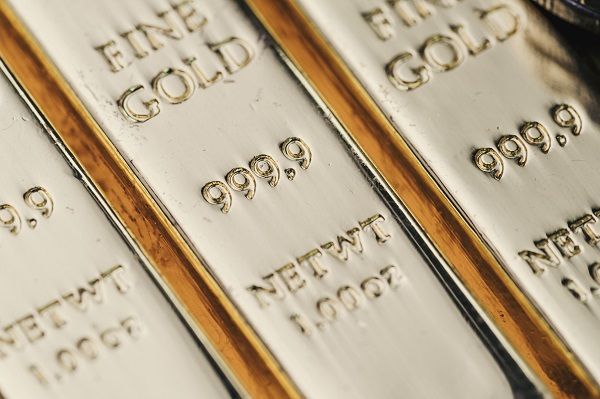
Twenty of the world’s most esteemed precious metals analysts projected a high above $1,400 an ounce for gold in the Forecast 2019 survey published by the London Bullion Market Association.
The LBMA, which is a standards setting body for the precious metals industry, polled 30 analysts for its annual survey. Two-thirds of those analysts expect gold to hit or surpass the $1,400 level in 2019.
Here’s WHY some of these analysts were so positive on the outlook for gold, according to the LBMA survey:
Eddie Nagao of the Sumitomo Corporation in Tokyo was the most bullish. Nagao projected that gold could trade as high as $1,475 in 2019.
“The Fed won’t be able to hike rates as much as it would want. The probability of a US recession is higher now and volatility of the markets is expected to rise as there will be fewer risk underwriters under such circumstance. Gold is to be one of the favored asset classes among institutional and private investors,” Nagao said.
Frederic Panizzutof the Mks Pamp Group in Geneva projects that gold could trade as high as $1,460 in 2019.
“We do expect the Fed to be on a wait and see stance, and to take a slower pace in hiking interest rates. In such a scenario, the US dollar might not strengthen much further, especially in the second half of the year. This combined with the ongoing US-China trade debates, geopolitical tensions, political turmoil and additional stock market downside corrections will be supportive for gold. More volatility in stock markets shall trigger safe haven gold buying. We view 2019 as a year of assets rebalancing and fresh money to flow into gold. The official sector shall continue to be a net buyer,” Panizzutof said.
Suki Cooper of Standard Chartered, New York called a gold high at $1,440 an ounce in 2019.
“Scaling back of Fed rate hike expectations, a weaker USD and lower US Treasury yields paint a favorable backdrop for gold prices…Gold has reasserted its safe haven status in past weeks amid a weaker equity market and easing trade tensions, and lingering political risks such as Brexit that could expose prices to the upside…Official-sector purchases are set to mark the strongest year in three years, buoyed by new market entrants such as Hungary, Poland and India, as well as established buyers such as Russia, Kazakhstan and Turkey. We expect this strength to continue in 2019,” Cooper said.
Cameron Alexander at GFMS Refinitiv in Perth sees gold climbing to $1,415 per ounce in 2019.
“We expect gold prices to continue to benefit from continued economic uncertainty and a slowdown in the US economy. As we approach the end of the economic growth cycle, demand for defensive assets is likely to pick up as concerns deepen about the widening US budget deficit and as the tariff-driven trade war starts to damage the country’s economy,” Alexander said.
The Bottom Line
The price of gold hit a 10-month high last week.
Industry analysts around the world expect gold to climb even higher. If you’ve been thinking about adding more gold to your portfolio, now is a great time to buy before prices rise even more. Get started here.
This One Simple Tip Can Make You a Better Investor
Posted on — Leave a commentIn real estate, the mantra for successful investing is “location, location, location.”
In financial markets, the mantra is “diversify, diversify, diversify.”
What is portfolio diversification exactly?
It’s as simple as not putting all your eggs in one basket.

Diversification is a proven strategy
During the 2008–2009 bear market, many investments lost value at the same time. But, proper portfolio diversification helped investors mitigate or lessen overall portfolio losses.
In fact, investors who owned physical gold during that time saw their precious metals investments climb in value, significantly.
The price of gold nearly doubled during the 2008 bear market
Historically, gold outperforms other asset classes like cash and stocks during turbulent times.
From October 2008 into December 2009, the price of gold climbed from $681 an ounce to $1,226 an ounce, or nearly doubled in value!
How to get started
Many people own stocks or exchange traded funds often through their company sponsored 401k plans. However, it is important to take additional steps to ensure a secure retirement and financial future.
Wall Street pros liken diversification to an “All Weather Portfolio” – or investments that will help you build wealth over the long-term, while managing risk and preventing the least amount of losses during bear markets.
- Buying and holding physical gold is a critical element to hedge your all-weather portfolio. Financial experts suggest allocating anywhere from 10-25% of your assets to gold.
Gold bullion: a conservative investment
No matter who you are, how much or how little money you have, gold bullion is smart investment for you. Gold and silver bullion in physical form is an appropriate asset for a small portion of any properly diversified investment portfolio.
Rare numismatics: an aggressive investment
If you are interested in a more aggressive investment, with the potential for outsized returns, rare coin purchases have historically produced the highest long-term investor returns.
- Gold bullion is like a dependable utility or consumer staples. Gold bullion helps you to create value over time.
- Meanwhile, rare coins are like “growth” stocks, like some tech company stocks that can see their stock price double or even triple in the course of a year.
Due to the limited supply and absolute rarity (the U.S. Mint will never again be able to produce a pre-1933 rare coin,) the prices of numismatics tends to climb faster than physical gold.
What’s happening now?
Gold prices are climbing. In fact, in January 2019, gold closed with the fourth consecutive monthly increase in a row. Gold is gaining wide-spread attention from hedge fund managers, high-net worth individuals and mom and pop investors who are looking to diversify their retirement assets. Follow their lead. Diversifying your portfolio can pay off handsomely over the long-term.
Not sure how to get started? Talk to one of our portfolio managers today to learn more. Call us at 1-800-880-4653 or email us here.
How the Flying Eagle Cent Reinvented the Coin
Posted on — 1 CommentFor more than 60 years, the United States minted the large cent. These coins, about the size of a half dollar, consisted of nearly pure copper. They were heavy, cumbersome and falling out of favor for commerce. By the early 1850s the time had come to issue something more practical, the Flying Eagle cent.

Copper prices were soaring and the cost of manufacturing the original large cent became cost prohibitive for the US Mint. Officials began exploring alternatives. One idea that gained some traction was an annular design; a coin with a hole cut through the center. However, after striking some prototypes, the mint discovered that the machinery could not eject the coins after punching the hole. Moreover, it became expensive to recover, melt, and reuse the center portion of the coin.
Despite this setback, Mint Director James Snowden proposed legislation in 1856 to press forward with a new coin to replace the large cent. He left the final decision regarding size and metallic composition to the Treasury. By March of 1856, the bill found its way to the Senate. A few weeks later it was amended so that the final piece would consist of at least 95% copper weighing.
James B. Longacre, portraitist and engraver for the Mint, began designing the relief images for the coin. His final look consisted of a flying eagle on one side and a wreath framing the text “One Cent” on the other. Legend has it that the inspiration for the design came from “Peter the Eagle,” an eagle that would frequent the premises of the Philadelphia Mint.
Later, the Mint took steps to shore up acceptance of the dramatically new look and feel of the coin. They sent early pieces to congressmen, members of the House Committee on Coinage, and other government officials.
These early 1856 pieces were considered transitional coins, not official currency because congressional approval was still pending. As a result, they are considered particularly valuable. Soon after the bill stalled. Tennessee Congressman George Washington Jones expressed his dissatisfaction with the coin believing it invalid because it wasn’t entirely gold or silver. In time, officials were able to defend the new coin and advance the bill through the process eventually getting it to pass.
The Mint encountered problems minting the design. The hard copper-nickel alloy led to broken dies and manufacturing problems. The Mint experimented with various alterations to solve the problem. They attempted making the relief of the eagle shallower to put less strain on the presses. By 1859 the Mint was prepared to replace the eagle design entirely with an image of Liberty wearing an Indian-style headdress.
Since its minting, the earliest 1856 Flying Eagle coins have attracted many collectors. In fact, in 2004 an 1856 cent in MS-66 condition fetched $172,500 at action. Even the less rare pieces, such as an 1857, or 1858 pressing in MS-63 condition could bring up to $11,000.
Why Collectors Dream of Owning an 1894-S Barber Dime
Posted on — Leave a commentBarber dimes were minted from 1892 through 1916 and struck at four different mints.
In 1894, however, the San Francisco mint struck only 24 Barber dimes, which have become one of the most sought-after, mysterious and prized rarities in U.S. history.
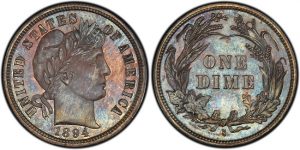
Serious collectors can only dream of owning an 1894-S Barber dime. They rarely surface for sale and when they do the price is out of reach for most.
In 2016, an 1894-S Barber dime sold for nearly $2 million.
Why were only 24 Barber dimes struck in San Francisco in 1894?
There are several stories explaining the tiny mintage.
As the most popular story goes, San Francisco Mint Superintendent John Daggett chose to strike a few dimes of the current date for banker friends who heard there would be no dimes struck that year.
Then, after Mr. Daggett struck the dimes, he gave 3 them to his daughter Hallie telling her to save them until she was as old as he was as they would become quite valuable someday.
Sadly, children sometimes fail to heed the advice of their parents.
It was a hot day and young Hallie could not resist stopping at an ice cream shop on the way home from the Mint and spending one of her brand new dimes. She did save the other two for many years until she sold them in the 1950s.
Other theories have been advanced as to why the mint struck only 24. While no one will likely ever really know the truth, the fact is whenever one surfaces for sale, wealthy collectors leap at the opportunity.
Alternate Theories for the 1894-S Barber Dime
Another theory to explain the limited mintage is that the San Francisco mint’s annual audit revealed a discrepancy of $2.40, so the 24 dimes were struck to compensate for this before the fiscal year ended on June 30.
Yet even another theory suggests the 1894-S dimes were struck to test the dies.
Lastly, another account suggests that over the course of 1894, the mint received a large sum in dimes, leaving the San Francisco mint well supplied in dimes on hand and thus did not plan strike any dimes that year. However, after nearly all of the coin bullion had been utilized, the mint had a small amount that coin only into dimes. Thus, the mint struck only twenty-four of them that year.
The Barber Dime Coin Details
The Barber dime is a classic American coin. It is part of a collection of dimes, quarter and half dollars, which all bear the signature of Charles E. Barber, the Chief Engraver. Known as the “King of the Mint” until his death in 1917, he set the tone for all of America’s turn of the century coinage.
Notably, his coin designs are considered to be some of the most inspiring in all of U.S coin history. Barber’s designs reflected the end of a great age in American coin art.
The Barber coin series in many ways represented America as it developed into a world power at the end of the 19th and beginning of the 20th century.
Barber dimes are composed of 90 percent silver and 10 percent copper.
Many of the Barber coins were melted down into bullion amid an increase in the price of silver in the late 1970s and the 1980s. They were produced at four mints, Philadelphia, Denver, New Orleans, and San Francisco
Barber dime values are on the rise now, with increased interest in the series.
Do you own any of these classic American coins? Tell us about your collection!
Gold, and Risk-Adjusted Returns
Posted on — Leave a commentImagine two investments. After holding both for a period of one year they independently deliver the exact same return. For all intents and purposes, these two investments are the same right? Wrong. They could in fact be very different despite the identical returns. This difference is the risk-adjusted return.
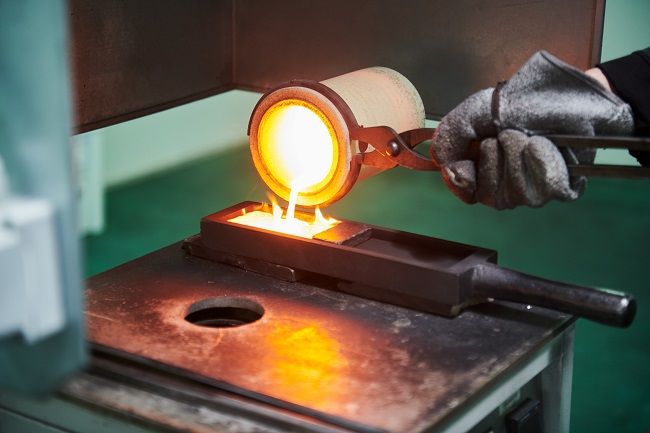
A risk-adjusted return is a measurement of how well an asset performs based on the risk incurred by the investor. In other words, even if two assets have the same return, one can deliver a superior risk-adjusted return if it takes on less risk to generate the return. Risk-adjusted returns can be gauged with several measurements. The Sharpe ratio, R-squared, alpha, beta, and standard deviation are all risk measurements. Measurements like these are important for investors because it helps them determine if the level of risk they’re incurring is in line with their tolerance. The bottom line: It’s not enough to look at an asset’s returns. Investors need to know the risk they’re taking.
Recently, analysts at the World Gold Council used a risk-adjusted approach to measure gold’s performance over the past decade. They found that “adding 2%, 5% or 10% in gold over the past decade to the average pension fund portfolio would have resulted in higher risk-adjusted returns.” Simply put, including gold in a portfolio boosts risk-adjusted returns in many cases. Researchers with the World Gold Council cites three, key reason why gold has this effect:
- Global demand
- Diversification
- Liquidity
Global Demand
Gold continues to benefit from its status of a global currency. “Demand from India and China grew from 25% in the early 1990s to more than 50% in recent years,” explain the researchers. This worldwide appeal is unique. Many assets don’t enjoy this advantage. Today, there are literally thousands of cryptocurrencies available, many falling out of favor with investors by the minute. Traditional fiat currencies like the dollar or sterling pound experience fluctuations based on trade policies and changes to GDP. Gold, in contrast, is not as heavily anchored to the seemingly capricious movements of economic policy makers.
Diversification
Gold doesn’t suffer from rising correlations as much as other assets. To illustrate this point, the researchers cite equally massive sell-offs among seemingly uncorrelated assets like equities, real estate, and hedge fund holdings during the global financial crisis. Moreover, additional research shows that when assets like stocks fall in value, gold actually exhibits a decreased correlation to these investments. This low, and in some cases, decreasing correlation underpins gold’s value as a risk-mitigating asset in a diversified portfolio.
Liquidity
A high liquidity asset is one that can be converted to cash fast. A low liquidity asset, in contrast, is one that cannot be easily converted to cash. Gold may not appear very liquid because investors must take a few steps to convert it to traditional, paper currency. However, gold is highly liquid from the perspective of international trading volumes. That is, gold trades in greater volumes than other popular currencies like Euros, Yen, and German Bunds.
These three factors all contribute to gold’s favorable risk profile as seen by the rising risk-adjusted return seen with an increasing allocation of gold to a hypothetical pension fund. Researchers measure this effect with something called the information ratio – a measurement of the return an asset delivers beyond its benchmark relative to its volatility. This means that, generally speaking, the riskier the portfolio, the more gold an investor may want to include to offset this risk.
Risk cannot be assessed in isolation. Investors need to understand what risk they’re absorbing to earn that return. Gold helps defray that risk through global demand, diversification and liquidity.
Connecting Two Worlds with the Panama–Pacific Commemorative Coin
Posted on — Leave a commentIn 1914, America unveiled its greatest engineering marvel, the Panama Canal. In its first year the canal saw more than 1,000 ships pass through its gates. Today, more than 815,000 vessels cross the passage making it one of the seven wonders of the modern world.

Years before completing the canal, the U.S. decided to start raising money for the Panama–Pacific International Exposition, a celebration to commemorate the project. Funding, however, slowed after the upheaval of the San Francisco earthquake. Unexpectedly, this delay allowed more time for fundraising efforts. The expo became a celebration not only of the canal, but also of San Francisco’s recovery from the natural disaster.
The San Francisco mint would become the birthplace of the Panama–Pacific commemorative coin. These coins were round and octagonal $50 pieces that would become the highest denomination, and largest gold pieces struck in the U.S at that time.
Previously, the U.S. Government did not allow the Mint to sell commemorative coins to the public. Instead, they allowed a group, or an organization to purchase such coins at face value. The purchasing organization could then sell the pieces directly to the public in a fundraising capacity. Former president of the American Numismatic Association, Frank Zerbe, was chosen to undertake this effort.
The obverse side of the coin depicts Liberty scattering flower and fruits from a cornucopia. This bountiful representation is meant to signify the rich trade opportunities expected from the construction of the canal merging two, previously distant parts of the world. The mint mark, an “S”, tells the owner that the piece was minted in San Francisco.
The coins were possible due, in part, to California Congressman Julius Kahn who introduced two bills calling for the commemorative coins. The bill made provisions for four designs, two $50 pieces with different shapes (one round, the other octagonal), a commemorative medal for sale to those attending the expo, and finally, a piece designed to be an award medal for those with prize-winning exhibitions.
Several sculptures were considered for the design work. Eventually, the artist’s designs were approved, and they sent bronze casts of their work to Medallic Art Company. These initial pieces would allow the mint to fabricate dies for casting. The coins were so large that the equipment at the San Francisco mint was insufficient. To solve this problem, officials at the Philadelphia mint shipped larger hydraulic metal presses to assist in the production.
Surprisingly, the coins did not sell well. In time, many were returned to the mint for melting. Today, the Panama-Pacific half dollar can fetch anywhere from $375 to $2,500 based on the condition. The most valuable pieces, however, are the round and octagonal $50 coins. In top condition the $50 round piece could earn up to $240,000 according to experts. In mint condition the $50 octagonal coin could command up to $245,000.
During the expo, more octagonal coins were sold than the round versions. Some speculate the popularity of this unusual shape was due to its association with the Gold Rush. That is, some early gold from the California Gold Rush was minted into unofficial coins not mandated by the US Mint. Many of these pieces were octagonal. Today, pieces like this often carry the name “pioneer gold.”
Though relatively rare, the Panama–Pacific commemorative coins are as enduring as the Panama Canal.








